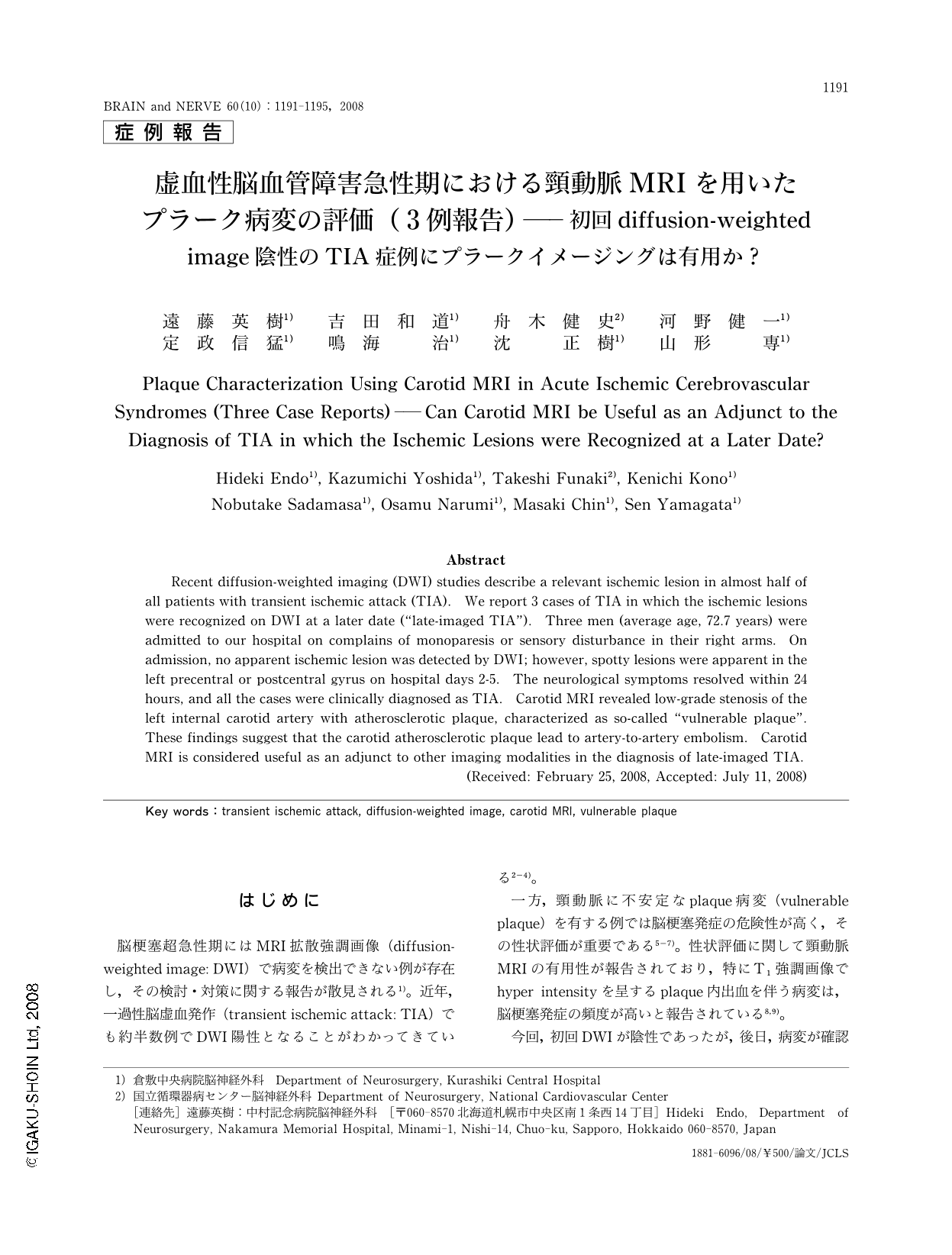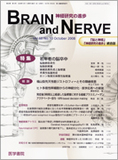Japanese
English
- 有料閲覧
- Abstract 文献概要
- 1ページ目 Look Inside
- 参考文献 Reference
はじめに
脳梗塞超急性期にはMRI拡散強調画像(diffusion-weighted image: DWI)で病変を検出できない例が存在し,その検討・対策に関する報告が散見される1)。近年,一過性脳虚血発作(transient ischemic attack: TIA)でも約半数例でDWI陽性となることがわかってきている2-4)。
一方,頸動脈に不安定なplaque病変(vulnerable plaque)を有する例では脳梗塞発症の危険性が高く,その性状評価が重要である5-7)。性状評価に関して頸動脈MRIの有用性が報告されており,特にT1強調画像でhyper intensityを呈するplaque内出血を伴う病変は,脳梗塞発症の頻度が高いと報告されている8,9)。
今回,初回DWIが陰性であったが,後日,病変が確認されたTIAの3症例を経験したので報告する(late-imaged TIA)。3例は共に初回DWIで梗塞巣が検出されなかったが,頸動脈MRI所見より頸動脈plaque病変と虚血発症の因果関係が疑われた。急性期における頸動脈MRIの有用性も併せて検討する。
なお,本文におけるTIAとは24時間以内に脳虚血症状が消失するものとした。
Abstract
Recent diffusion-weighted imaging (DWI) studies describe a relevant ischemic lesion in almost half of all patients with transient ischemic attack (TIA). We report 3 cases of TIA in which the ischemic lesions were recognized on DWI at a later date ("late-imaged TIA"). Three men (average age,72.7 years) were admitted to our hospital on complains of monoparesis or sensory disturbance in their right arms. On admission,no apparent ischemic lesion was detected by DWI; however,spotty lesions were apparent in the left precentral or postcentral gyrus on hospital days 2-5. The neurological symptoms resolved within 24 hours,and all the cases were clinically diagnosed as TIA. Carotid MRI revealed low-grade stenosis of the left internal carotid artery with atherosclerotic plaque,characterized as so-called "vulnerable plaque". These findings suggest that the carotid atherosclerotic plaque lead to artery-to-artery embolism. Carotid MRI is considered useful as an adjunct to other imaging modalities in the diagnosis of late-imaged TIA.
(Received: February 25,2008,Accepted: July 11,2008)

Copyright © 2008, Igaku-Shoin Ltd. All rights reserved.


